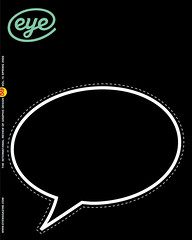Spring 2006
Unfurling artwords
The Walker Art Center has a new identity – multi-voiced, reflexive – that does exactly what it says
Design’s reductivist concept of identity has been drilled into us designers ever since oil company founder Marcus Samuel chose to represent his business with a shell back in 1900. Yet conventional corporate identity is failing those forward-thinking organisations that have a different communication model in mind. A model through which they are able not only to engage an audience as spectators and consumers, but also one that makes it possible for them to enter into a social exchange with participants and partners. Monomaniacal corporate identity design cannot show just how sophisticated and mutable these organisations really are.
The Walker Art Center in Minneapolis, Minnesota, USA, states its mission as ‘… a catalyst for the creative expression of artists and the active engagement of audiences.’ The Center already has a reputation for daring visual identities: in 1995 its in-house design department, then headed by Laurie Haycock Makela, was asked to respond to the increasing diversification of the Center’s audiences with a new identity. This took the form of a transmutable typeface with ‘snap-on’ serifs designed by Matthew Carter (see Eye no.19 vol. 5). At the time it was ground-breaking. The way the Center used Carter’s font may now appear over-worked, even ugly, but it can be seen as part of a rich vein of critique – obsessed with attacking Modernism – that grew out of North American post-graduate graphic design of the late 1980s and early 90s, in which Makela was immersed.
Makela was succeeded by Andrew Blauvelt, another designer thoroughly involved in the debates around postmodern design through his writing in Emigre, Design Issues and Eye. So by the time the Walker Art Center decided to take another look at their identity in 2005, upon the opening of their new Herzog and de Meuron designed expansion, Blauvelt had had time to develop his thoughts about the subject.
The brief was again driven by its changing relationship with the audience, demanding a response compatible with the way the new architectural spaces of the Center allowed for a new kind of informal engagement and interaction.
Blauvelt harbours reservations over the idiosyncratic visual qualities of Carter’s typeface (called ‘the Walker typeface’) but in the new identity he continued its use for naming the main entities of the institution as punctuation strung along long lines of words set over bands of graphic repeat pattern that group the words into what Blauvelt calls ‘vocabularies’. The vocabularies make up the identity’s ‘tone of voice’ matrix that provides different parts of the Center with different words with which to engage audiences appropriately. The new identity is a kit of parts called Walker Expanded; bars of coloured pattern carrying words set on long bands (‘tape’). It’s a font comprising a family of words such as ‘concerts’ and ‘film’ that communicate literally, instead of a family of weights (light, bold) that would have worked through visual association.
The result is beautiful. A Times Square-like streaming river of information full of reverberating graphic patterns; it seems to be continuously flowing and changing. This is a brilliant example of a multi-voiced, reflexive, graphic (not corporate) identity that does what it says.
All the artistic disciplines are embedded in it: DANCE, MUSIC, FILM, THEATER, SCULPTURE, DESIGN. It lists what events happen there: EXHIBITIONS, PERFORMANCES, SCREENINGS, TOURS, CLASSES, LECTURES, WORKSHOPS, TALKS, FESTIVALS. Even the shop has a voice, barking (on adhesive tape): KIDS, PAPER, TEXTILES, BOOKS, GIFTS, HOME, EXCLUSIVES.
The person who made it work (alongside Blauvelt’s team of Chad Kloepfer and Emmet Byrne) was local typeface designer Eric Olson from Process Type Foundry. Olson calls Walker Expanded a ‘utility’, and he has used typeface technology to make it simple to use from a keyboard. To set the word DESIGN just press the ‘D’ key. To get EXHIBITION just press ‘E’. The tricky bit for Olson was ensuring that each bar segment of graphic pattern overlapped seamlessly with another segment, which he achieved with some drastic negative kerning. This is something he doesn’t think would have been possible with the lack of precision inherent in aligning the patterns had they been EPS files rather than characters in a font. The utility’s simplicity of use in implementing a complex-looking identity makes the usual identity standards manual redundant, according to Olson.
When asked how he could see the word vocabularies growing and changing in the future, Blauvelt cited the possible introduction of adjectives ‘to characterise the Walker and its programs’. But doesn’t the visual appearance of his identity achieve that already? All the words that make up the identity are nouns: FESTIVALS, ARTIST TALKS, EDUCATION AND COMMUNITY PROGRAMS. Might the use of value-laden, qualifying adjectives risk turning a clever, user-centred graphic identity into marketing? Perhaps it is best kept functioning as a form of signage, simple labelling, that helps visitors find inspiration but doesn’t attempt to tell them what to think.
Nick Bell, designer, former Eye creative director, London
First published in Eye no. 59 vol. 15, 2006
Eye is the world’s most beautiful and collectable graphic design journal, published quarterly for professional designers, students and anyone interested in critical, informed writing about graphic design and visual culture. It is available from all good design bookshops and online at the Eye shop, where you can buy subscriptions and single issues.

